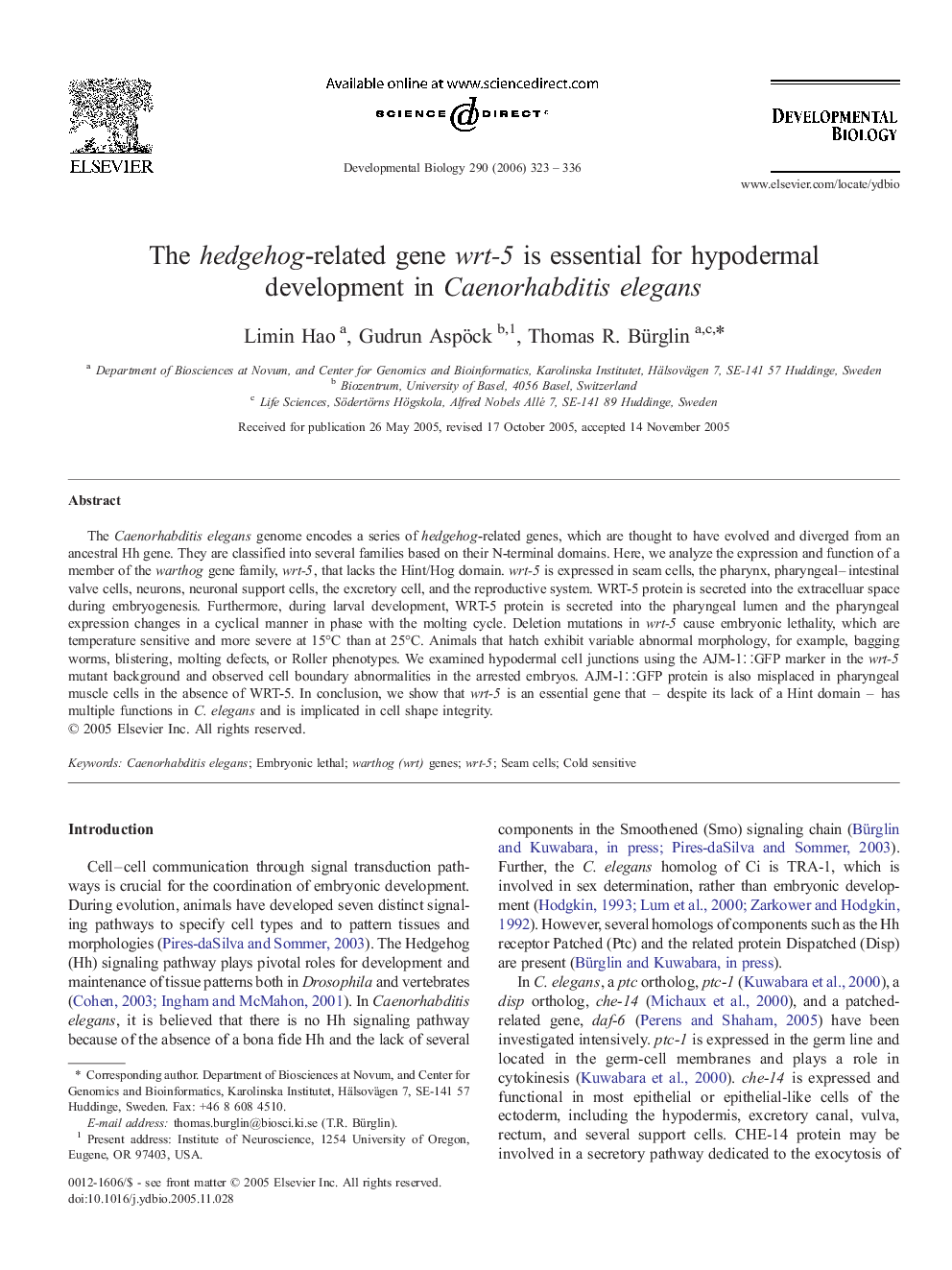| Article ID | Journal | Published Year | Pages | File Type |
|---|---|---|---|---|
| 2176090 | Developmental Biology | 2006 | 14 Pages |
The Caenorhabditis elegans genome encodes a series of hedgehog-related genes, which are thought to have evolved and diverged from an ancestral Hh gene. They are classified into several families based on their N-terminal domains. Here, we analyze the expression and function of a member of the warthog gene family, wrt-5, that lacks the Hint/Hog domain. wrt-5 is expressed in seam cells, the pharynx, pharyngeal–intestinal valve cells, neurons, neuronal support cells, the excretory cell, and the reproductive system. WRT-5 protein is secreted into the extracelluar space during embryogenesis. Furthermore, during larval development, WRT-5 protein is secreted into the pharyngeal lumen and the pharyngeal expression changes in a cyclical manner in phase with the molting cycle. Deletion mutations in wrt-5 cause embryonic lethality, which are temperature sensitive and more severe at 15°C than at 25°C. Animals that hatch exhibit variable abnormal morphology, for example, bagging worms, blistering, molting defects, or Roller phenotypes. We examined hypodermal cell junctions using the AJM-1∷GFP marker in the wrt-5 mutant background and observed cell boundary abnormalities in the arrested embryos. AJM-1∷GFP protein is also misplaced in pharyngeal muscle cells in the absence of WRT-5. In conclusion, we show that wrt-5 is an essential gene that – despite its lack of a Hint domain – has multiple functions in C. elegans and is implicated in cell shape integrity.
